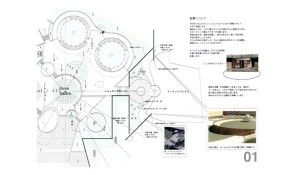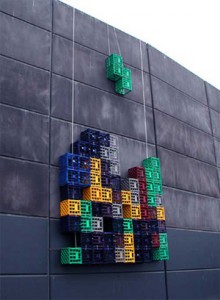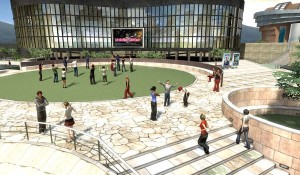News Blurbs
This Old Home: How one architect shaped the space we know today
Not all of Home was created equal; region to region, the “core” spaces of Home vary. Questions have always arisen about the differences in Home core spaces; recently, we were able to dig up some history behind the various designs and what went into them.
It all started with a virtual plot of grass. The team at Sony Home in Tokyo received the core template from Sony’s studio in London, and worried that it wouldn’t fly in Asia. Sony hired Japanese architect Kenji Ikemoto, and his firm, Jota Associates, in Tokyo. After the architect signed on, Sony’s Home team in Tokyo asked that the plaza not be flat, but rather have some vertical topography. Ikemoto got to work.
 Hiring Ikemoto for the project wasn’t the original plan. In early 2007, One member of the Home team in Tokyo thought they should get a real architect and recommended Ikemoto. This turned out to be a masterstroke.
Hiring Ikemoto for the project wasn’t the original plan. In early 2007, One member of the Home team in Tokyo thought they should get a real architect and recommended Ikemoto. This turned out to be a masterstroke.
Ikemoto started work on Home much as he would any other architecture project; using VectorWorks, a standard architectural CAD software, and Adobe Illustrator and Photoshop, he created a blueprint for the main square and each of the four buildings. He approached every item he designed, every building, as if could be built in the real world. This gave the design a realistic feel in a virtual world.
 No detail was too small for Ikemoto’s attention. To make Home look as realistic as possible, he picked real-world materials, down to the shiny plastic composite used in the movie theater seats and the flagstones in Home Square. He gave Sony’s programmers photos of each material he had in mind. His designs live on in Home in Asia, with the Home square, theater, Game Room, café and shopping center. Across the ocean, we in the SCEA region incorporated his design by including it the interior of the mall and the gamer’s lounge.
No detail was too small for Ikemoto’s attention. To make Home look as realistic as possible, he picked real-world materials, down to the shiny plastic composite used in the movie theater seats and the flagstones in Home Square. He gave Sony’s programmers photos of each material he had in mind. His designs live on in Home in Asia, with the Home square, theater, Game Room, café and shopping center. Across the ocean, we in the SCEA region incorporated his design by including it the interior of the mall and the gamer’s lounge.
Next Generations
Namco Bandai has created a new label called Namco Generations, through which it will release high-definition, enhanced versions of classic arcade brands for download on the PlayStation Network. The first Namco Generations title will be a follow-up to the acclaimed Pac-Man Championship Edition: Pac-Man Championship Edition DX, which was released on the PlayStation Network on November 23.
 Namco Generations will also release Galaga Legions DX and Aero-Cross, which it describes as a “reimagining” of 1985 arcade title Metro-Cross. The company says it will announce more projects under the label throughout 2011.
Namco Generations will also release Galaga Legions DX and Aero-Cross, which it describes as a “reimagining” of 1985 arcade title Metro-Cross. The company says it will announce more projects under the label throughout 2011.
The company is also highlighting a new community newsletter associated with the brand, accessible through the main menu of games released under the Namco Generations label.
It promises behind-the-scenes info as well as play tips and game announcements through the newsletter, aiming to build a community around classic arcade revivals.
No-Stress Tetris
A study by the Department of Psychiatry at the University of Oxford, followed by a research article, “Key Steps in Developing a Cognitive Vaccine against Traumatic Flashbacks: Visuospatial Tetris versus Verbal Pub Quiz” concluded that the classic puzzle game Tetris helps lessen the effects of post-traumatic stress disorder, acting as a “cognitive vaccine” for the affliction, and would offer a suitable ” alternative” to PTSD drug treatment or counseling.
The study, consisting of two experiments, took participants and had them all watch “traumatic film scenes of injury and death” in order to encourage flashbacks, a symptom of post-traumatic stress disorder. 
Following the film, test subjects in one experiment took a 10 minute break, while the subjects of the other variation of the experiment took a four-hour break. In both experiments, participants were allocated for 10 minutes to either play Tetris, a pub quiz game or sit quietly.
Over a period of a week, participants kept a diary tracking the flashbacks of the film. The study found that “…playing Tetris after viewing traumatic material reduced later flashbacks compared to playing the pub quiz or sitting quietly.”
It is perhaps ironic to note that while federal and state legislators regularly attempt to form a connection between video games and violent behavior in humans (claims which have little scientific merit supporting them), video games are being used to actually help humans overcome violent trauma.



 LinkedIn
LinkedIn Twitter
Twitter
Nice Article. Thank you.
i love blurbs!